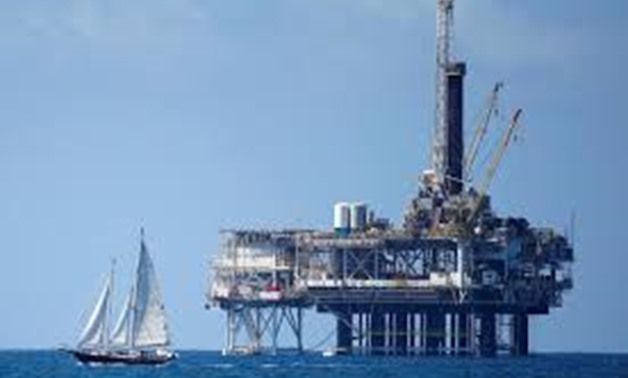
An offshore oil platform is seen in Huntington Beach, California September 28, 2014 -Reuters
SINGAPORE - 17 August 2017: Oil prices edged up on Thursday, but the market continued to be weighed down by high production, especially in the United States.
Brent crude futures LCOc1 were at $50.36 per barrel at 0657 GMT, up 9 cents, or 0.2 percent, from their last close.
U.S. West Texas Intermediate (WTI) crude futures CLc1 were at $46.80 a barrel, up just 2 cents.
The slight gains followed a more than 1 percent fall in the previous session.
Energy Information Administration (EIA) data on Wednesday showed that commercial U.S. crude oil stocks C-STK-T-EIA have fallen by almost 13 percent from their peaks in March to 466.5 million barrels. Stocks are now lower than in 2016.
"If inventory declines continue at this pace, stocks will fall back below the five-year average in around two months," said William O'Loughlin, analyst at Australia's Rivkin Securities.
"The pace of the declines indicates that the OPEC production cuts are having an effect, although the current oil price suggests that the market is skeptical about the longer-term prospects for rebalancing of the oil market," he added.
ANZ bank said the market seemed "to focus on the rise in (U.S.) production", which jumped by 79,000 barrels per day (bpd) to 9.5 million bpd last week, its highest level since July 2015, and 12.75 percent above the most recent low in mid-2016. C-OUT-T-EIA
The soaring U.S. output undermines efforts by the Organization of the Petroleum Exporting Countries which, together with non-OPEC producers like Russia, has pledged to restrict output by 1.8 million barrels per day (bpd) between January this year and March 2018.
Brent prices are down by almost 12 percent since the start of the cuts in January.
The subdued market sentiment also has roots on the demand side.
Oil producers have enjoyed years of rocketing demand, fueled largely by China's voracious thirst coming from over 2 million new car sales a month. aCNDSLSAUT
But this boom is coming to an end as its vehicle sales slow in a maturing market, and as cars become more efficient and start using alternative fuels.
"Gasoline consumption growth in China is set to see a marked slowdown over the coming years, due to macroeconomic headwinds, improving fuel economy and competition from alternative fuels," BMI Research said.
"We forecast average annual growth of 1.3 percent over 2017-2021, compared with 9.6 percent seen over 2011-2016," it added.
India, often touted as the 'next China' for oil demand growth, however, only sells around 260,000 cars per month and has not seen significant sales growth in the past years. aINDVEHCAR

Comments
Leave a Comment